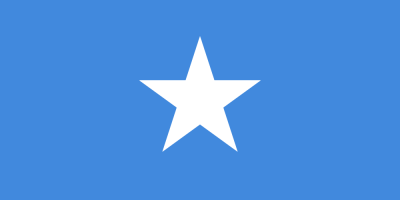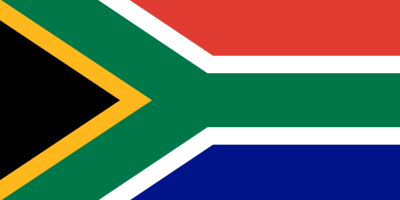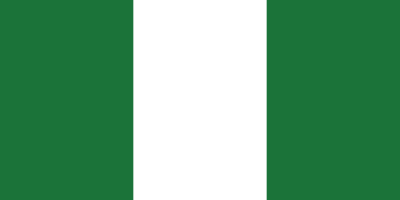Ethiopia flag color codes waves over the ancient land with its distinctive horizontal stripes of green, yellow, and red. The lively flag has represented Ethiopia for over a century. But what are the precise Ethiopia flag color codes that bring this iconic banner to life? In this guide, we will provide the official HTML HEX, RGB, PANTONE, HSL, CMYK, HWB, and NCOL values for the colors on the Ethiopian flag. Whether you want to recreate this symbolic flag for a school project, use the colors in a design, or show your Ethiopian pride, this article will give you the exact Ethiopia flag color codes you need. Read on for the definitive colors of the green, yellow, and red stripes that characterize the Ethiopia flag.
Table of Contents
What are the colors of Ethiopia flag?
The colors of the Ethiopia flag are:
- Green – The top horizontal stripe is green. This represents the fertility and natural wealth of Ethiopia.
- Yellow – The middle stripe is yellow. This represents peace, hope, and justice.
- Red – The bottom stripe is red. This represents sacrifices made by the people of Ethiopia for freedom and heroism.
Specifically, the colors are:
- Green: Pantone 355C
- Yellow: Pantone 1235C
- Red: Pantone 186C
Together, the green, yellow, and red symbolize the agricultural riches, desire for harmony, and sacrifices of the past and future to build the nation of Ethiopia. The vibrant flag reflects the pride and aspirations of the Ethiopian people.
Ethiopia flag color codes & Color Names:
GREEN
| Color Model | Values |
|---|---|
| HTML | #00966E |
| HEX | 0, 150, 110 |
| RGB | rgb(0, 150, 110) |
| PANTONE | 355 C |
| HSL | hsl(163, 100%, 29%) |
| CMYK | 100%, 0%, 27%, 41% |
| HWB | 163, 0, 41 |
| NCOL | 285 |
YELLOW
| Color Model | Values |
|---|---|
| HTML | #F1C40F |
| HEX | 241, 196, 15 |
| RGB | rgb(241, 196, 15) |
| PANTONE | 116 C |
| HSL | hsl(49, 89%, 50%) |
| CMYK | 0%, 19%, 94%, 5% |
| HWB | 49, 94, 5 |
| NCOL | 1092 |
RED
| Color Values | Values |
|---|---|
| HTML | #D62E2E |
| HEX | 214, 46, 46 |
| RGB | rgb(214, 46, 46) |
| PANTONE | 186 C |
| HSL | hsl(0, 66%, 51%) |
| CMYK | 0%, 78%, 78%, 16% |
| HWB | 0, 78, 16 |
| NCOL | 701 |
BLUE
| Color Model | Values |
|---|---|
| HTML | #0D47A1 |
| HEX | 13, 71, 161 |
| RGB | rgb(13, 71, 161) |
| PANTONE | 286 C |
| HSL | hsl(217, 85%, 34%) |
| CMYK | 100%, 56%, 0%, 37% |
| HWB | 217, 0, 37 |
| NCOL | 1071 |
What is the meaning of colors in the Ethiopia flag?
The colors of the Ethiopia flag have symbolic meaning:
Green – The green stripe represents the fertility and natural wealth of the Ethiopian landscape. Ethiopia is an agriculturally rich country with diverse topography and ecological zones. The color green honors Ethiopia’s natural riches.
Yellow – The yellow stripe symbolizes hope, justice, and peace. It reflects Ethiopia’s sovereignty and unity as a nation. The yellow represents the hope for harmony, equality, and optimism for the future.
Red – The red stripe represents the bloodshed by Ethiopians during the battles against colonization as well as the sacrifices made to maintain independence. The red honors the courage and patriotism shown by Ethiopians defending their country.
In summary:
Green – Fertility and landscape Yellow – Hope, justice, and peace
Red – Sacrifice and heroism
The green, yellow, and red emblemize the natural wealth of the land, aspirations for justice and harmony, and the sacrifices made for freedom. The flag’s vivid colors reflect pride in Ethiopia’s national identity.
Explore More Flag Colors:
- Guyana Flag Color Codes
- Zambia Flag Color Codes
- French Polynesia Flag Color Codes
- Swaziland (Eswatini) Flag Color Codes
FAQs: Frequently Asked Questions:
What is Ethiopia famous for?
Ethiopia is famous for several notable aspects of its history, culture, and natural beauty:
Ancient Civilization: Ethiopia is one of the oldest countries in the world, with a rich history dating back thousands of years. It is home to ancient civilizations such as the Aksumite Empire, known for its monumental obelisks and ruins.
Unique Language and Alphabet: Amharic, the official language of Ethiopia, is one of the few written languages in Africa with its own unique script, called Ge’ez. The country also has a diverse array of other languages spoken by its various ethnic groups.
Coffee: Ethiopia is considered the birthplace of coffee, and the coffee plant originated in the region. Ethiopian coffee is renowned for its distinctive flavors and is an integral part of Ethiopian culture and social life.
Lucy and Human Origins: Ethiopia is famous for the discovery of “Lucy,” one of the earliest known hominid fossils, which dates back over 3 million years. This discovery has contributed significantly to our understanding of human evolution and origins.
Religious Heritage: Ethiopia is one of the earliest Christian civilizations in the world, with Christianity dating back to the 4th century AD. The country is also home to unique Christian traditions, including the Ethiopian Orthodox Tewahedo Church.
Cultural Diversity: Ethiopia is incredibly diverse, with over 80 ethnic groups, each with its own distinct traditions, languages, and cultural practices. This diversity is reflected in the country’s music, dance, cuisine, and festivals.
Natural Landscapes: Ethiopia boasts diverse and breathtaking landscapes, including the Simien Mountains, the Danakil Depression (one of the hottest places on Earth), the Great Rift Valley, and the otherworldly rock-hewn churches of Lalibela.
Athletic Achievements: Ethiopian athletes have excelled in long-distance running, particularly in events like the marathon and long-distance track races. Ethiopian runners have won numerous Olympic and World Championship medals, earning global recognition for their prowess.
What is the old name for Ethiopia?
The old name for Ethiopia is “Abyssinia.” This term was commonly used by Europeans and others outside of Ethiopia to refer to the region before it officially adopted the name “Ethiopia” as its official title. The name “Abyssinia” is derived from the Arabic word “Habesha,” which was used to describe the region and its people. However, “Abyssinia” is no longer commonly used, and “Ethiopia” has been the official name of the country since ancient times.
Is Ethiopian an Arab country?
No, Ethiopia is not an Arab country. While Ethiopia is located in the northeastern part of Africa and has historical and cultural ties to the Arab world through trade, migration, and interactions, it is not considered an Arab country. The majority of Ethiopians are of indigenous African ethnicities, with the largest ethnic group being the Oromo, followed by the Amhara, Tigray, and others.
What are the top 3 religions in Ethiopia?
The top three religions in Ethiopia are:
Ethiopian Orthodox Tewahedo Church: This is the largest religious denomination in Ethiopia, with millions of followers. It is an ancient Christian church that traces its origins back to the 4th century AD and has been a significant influence on Ethiopian culture, history, and identity.
Islam: Islam is the second-largest religion in Ethiopia, with a significant Muslim population, particularly in regions such as Somali, Afar, and parts of Oromia. Islam was introduced to Ethiopia in the early days of the Islamic expansion and has coexisted with Christianity for centuries.
Protestant Christianity: Protestant Christianity has seen significant growth in Ethiopia in recent decades, with various Protestant denominations and evangelical groups gaining followers across the country. This includes churches such as the Ethiopian Evangelical Church Mekane Yesus and Pentecostal denominations.
What is Ethiopia rich in?
Ethiopia is rich in various natural and cultural resources, including:
Biodiversity: Ethiopia is known for its rich biodiversity, with diverse ecosystems ranging from highlands to lowlands. The country is home to numerous endemic plant and animal species, including the Ethiopian wolf, Gelada baboon, and various bird species.
Coffee: Ethiopia is considered the birthplace of coffee, and it is one of the world’s leading coffee producers and exporters. Coffee cultivation is a significant part of Ethiopia’s economy and cultural heritage.
Cultural Heritage: Ethiopia has a rich cultural heritage, with ancient civilizations, historical monuments, and archaeological sites dating back thousands of years. This includes the rock-hewn churches of Lalibela, the ancient city of Aksum, and the ruins of the Aksumite Empire.
Natural Resources: Ethiopia has significant natural resources, including minerals such as gold, platinum, and tantalum. The country also has potential for hydropower generation from its many rivers and waterfalls.
Agricultural Land: Ethiopia has fertile agricultural land suitable for cultivating various crops, including cereals, pulses, oilseeds, and vegetables. Agriculture is a vital sector of the economy, employing a large portion of the population and contributing to food security.
Renewable Energy: Ethiopia has abundant renewable energy resources, particularly hydroelectric power and geothermal energy. The country has invested in developing its renewable energy potential to meet domestic energy needs and promote sustainable development.
Cultural Diversity: Ethiopia is home to diverse ethnic groups, each with its own languages, traditions, and cultural practices. This cultural diversity enriches the country’s cultural landscape and contributes to its vibrant identity.
Is English spoken in Ethiopia?
Yes, English is widely spoken and understood in Ethiopia, particularly in urban areas, government institutions, schools, and the business sector. It is taught as a second language in schools and is commonly used as a lingua franca for communication between people of different ethnic groups and regions.
What was the capital of Ethiopia?
The capital of Ethiopia is Addis Ababa.
Is Ethiopia a successful country?
Here are some key aspects to consider:
Economic Growth: Ethiopia has experienced significant economic growth in recent years, with an average annual GDP growth rate of around 9-10% over the past decade. The country has attracted foreign investment, diversified its economy, and implemented infrastructure projects aimed at stimulating development.
Poverty Reduction: Ethiopia has made progress in reducing poverty rates, with significant improvements in access to education, healthcare, and basic services. However, poverty remains a challenge, particularly in rural areas where a large portion of the population depends on agriculture for their livelihoods.
Social Development: Ethiopia has made strides in social development indicators, including improvements in literacy rates, life expectancy, and access to clean water and sanitation. Efforts to address gender inequality and empower women have also been prioritized, although more progress is needed in this area.
Political Stability: Ethiopia has undergone significant political reforms in recent years, including changes in leadership and efforts to promote democracy and human rights. However, challenges such as ethnic tensions, political unrest, and conflicts in certain regions have posed challenges to stability and governance.
Infrastructure Development: Ethiopia has invested in infrastructure projects such as roads, railways, airports, and energy infrastructure to support economic growth and development. These investments have helped improve connectivity and facilitate trade and commerce within the country and with neighboring regions.
Environmental Sustainability: Ethiopia has made commitments to environmental conservation and sustainability, including reforestation efforts and initiatives to address climate change. However, challenges such as deforestation, land degradation, and water scarcity remain significant concerns.
What is Ethiopia’s national dish?
Some popular accompaniments include:
Doro Wat: A spicy chicken stew made with berbere spice blend, onions, garlic, ginger, and other spices.
Misir Wat: A spicy red lentil stew cooked with onions, garlic, berbere spice, and sometimes tomatoes.
Key Wat: A spicy beef stew made with similar spices as Doro Wat, but using beef instead of chicken.
Tibs: Grilled or sautéed meat (such as beef, lamb, or goat) or vegetables seasoned with spices and often served with onions, peppers, and tomatoes.
Atkilt Wat: A mixed vegetable stew made with carrots, potatoes, cabbage, and other vegetables cooked in a spiced sauce.













